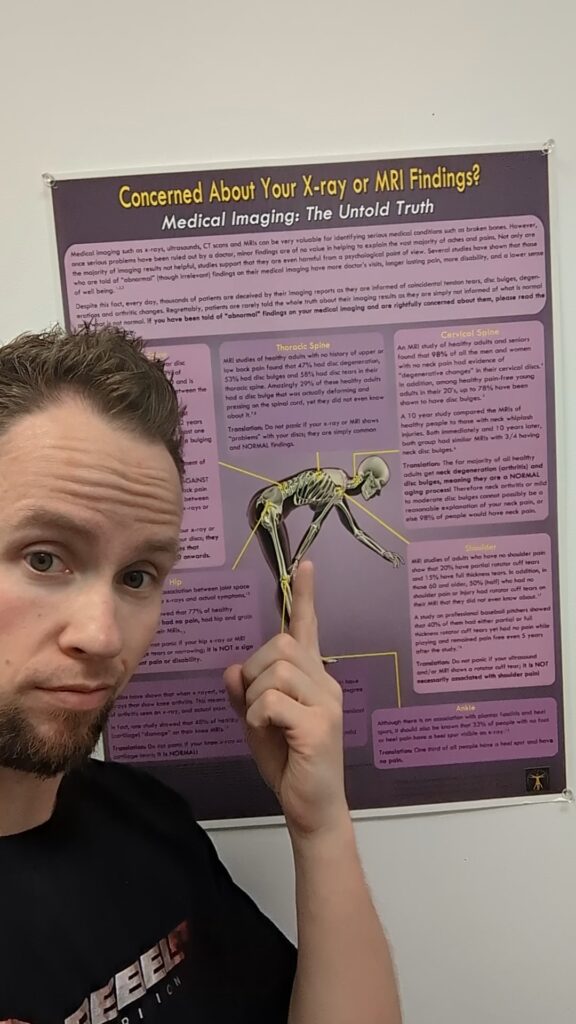We are not always our MRI
There’s a poster I have up in both of my treatment rooms that talks about V.O.M.I.T., no not what you’re probably thinking but Victims of Medical Imaging and Technology. X-rays, MRIs, CT Scans, and ultrasounds are great for determining if there are serious medical conditions occurring like a broken bone for example. However, after anything serious is ruled out, findings from medical imaging can end up being of no added value and potentially be harmful to someone’s mental well-being. Here are some highlights of statistics from the V.O.M.I.T. poster:
“An MRI study of healthy adults and seniors found that 98% of all the men and women with no neck pain had evidence of “degenerative changes” in their cervical discs”
“MRI studies showed that in those 60 and older, half who had no shoulder pain or injury had rotator cuff tears”
“Studies have shown that when x-rayed, up to 85% of adults with no knee pain have x-rays that show arthritis.”
“Amongst healthy young adults aged 20-22 with no back pain, 48% had at least one degenerated disc and 25% had a bulging disc” (referencing the lumbar spine/lower back)
“MRI studies of healthy adults with no history of upper or lower back pain found that 47% had disc degeneration, 53% had disc bulges and 58% had disc tears. As well 29% had a disc bulge that was deforming and pressing on the spinal cord” (referencing the thoracic spine/mid back)
Some things to think about after reading these over are when a tear or disc herniation shows up on imaging, how are we able to know that that was not already present prior to pain developing? If it’s a limb, was imaging on the other limb done as well to know if they differ? Have you yourself or do you know somebody that had surgery and had no benefit from it? It may be because what showed up on the imaging had nothing to do with the pain being experienced.
As you can see when you or your clients have what would be considered “abnormal” findings on their medical imaging it should not automatically be considered the source of their issue. Educating yourself and your clients on the inconsistencies with medical imaging results can help you and your clients feel more confident that progress can be made with treatment and that there are more options than surgery or “just living with it”.
If this information is new to you or you’re feeling skeptical about it, I encourage you to explore this topic further on your own and see what you’re able to find! As well feel free to write in the comments about your own experiences (albeit personal or in your practice) with medical imaging. As always, hope this information helps you go stronger, and longer.
Tyler Chliboyko, RMT and RockTape Ambassador
Follow Tyler on IG
The information provided in this blog is for informational purposes only and should not be construed as medical advice. It is not intended to replace professional medical guidance, diagnosis, or treatment. Always seek the advice of a trained healthcare professional before making any changes to your medical treatment plan. The authors of this blog and the website on which it appears are not liable for any consequences arising from the use or reliance on the information provided.
